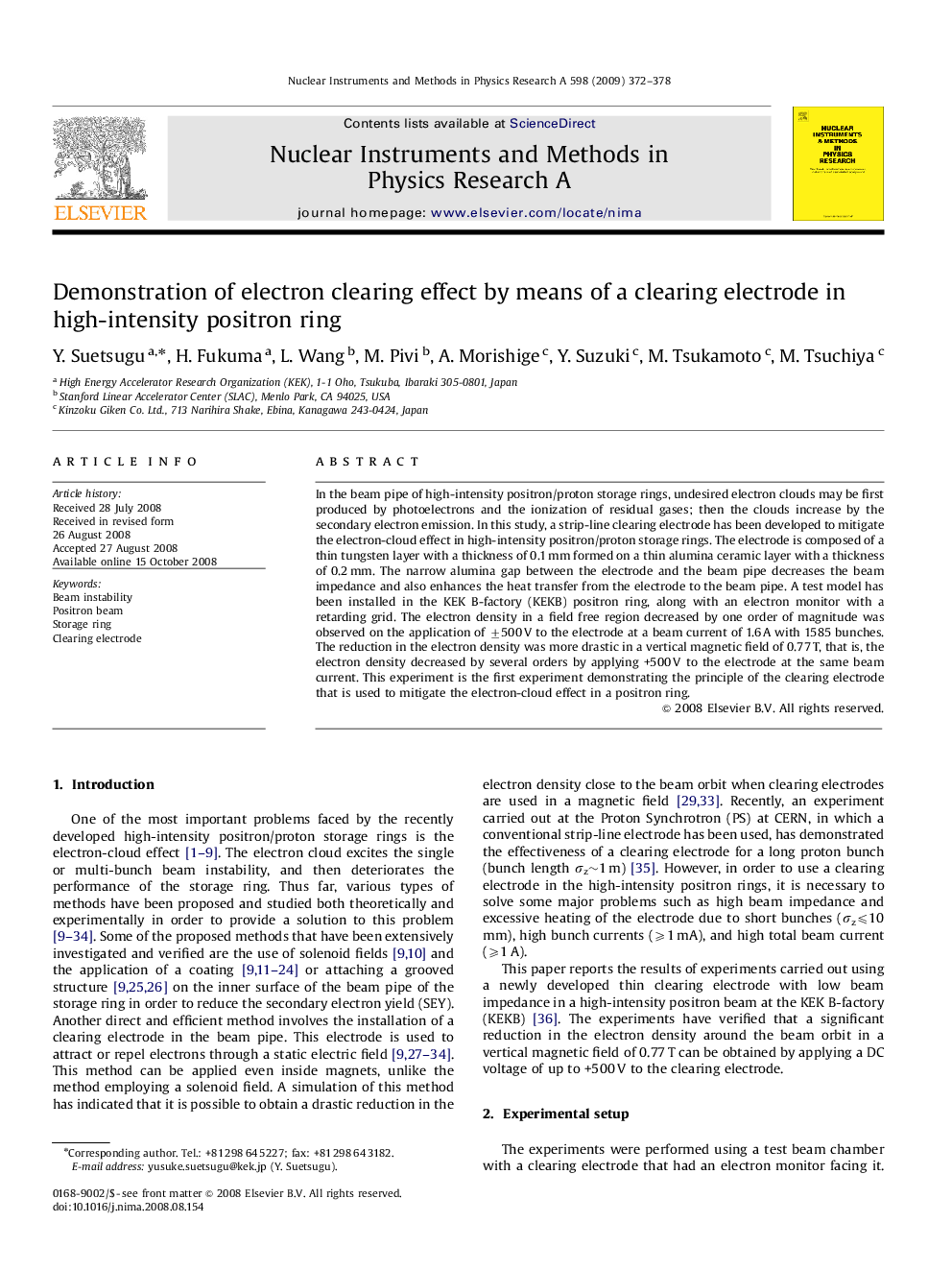| Article ID | Journal | Published Year | Pages | File Type |
|---|---|---|---|---|
| 1828779 | Nuclear Instruments and Methods in Physics Research Section A: Accelerators, Spectrometers, Detectors and Associated Equipment | 2009 | 7 Pages |
In the beam pipe of high-intensity positron/proton storage rings, undesired electron clouds may be first produced by photoelectrons and the ionization of residual gases; then the clouds increase by the secondary electron emission. In this study, a strip-line clearing electrode has been developed to mitigate the electron-cloud effect in high-intensity positron/proton storage rings. The electrode is composed of a thin tungsten layer with a thickness of 0.1 mm formed on a thin alumina ceramic layer with a thickness of 0.2 mm. The narrow alumina gap between the electrode and the beam pipe decreases the beam impedance and also enhances the heat transfer from the electrode to the beam pipe. A test model has been installed in the KEK B-factory (KEKB) positron ring, along with an electron monitor with a retarding grid. The electron density in a field free region decreased by one order of magnitude was observed on the application of ±500 V to the electrode at a beam current of 1.6 A with 1585 bunches. The reduction in the electron density was more drastic in a vertical magnetic field of 0.77 T, that is, the electron density decreased by several orders by applying +500 V to the electrode at the same beam current. This experiment is the first experiment demonstrating the principle of the clearing electrode that is used to mitigate the electron-cloud effect in a positron ring.
